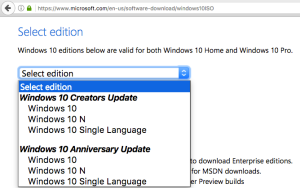TLDR: Of course not : ) To grow your income, it’s better to invest in your individual strengths (e.g., improving coding skills) and spend less time playing other peoples’ games.
My overall take on sharing services (Airbnb – can never figure out how to cap this word! Uber, Turo, etc): they are temporary exploits of outdated technology and regulation, and people who rely on these services for income too much will not be happy in the long term. There are lots of posts out there tearing up both Airbnb and Uber. I personally don’t believe they are doomed, just do not consider either one as a stable long-term income option. But today let’s take a look at another poster child of the sharing wave of the future: Turo, formerly known as Relay Rides.
Casually browsing the Interwebs you might notice some numbers getting thrown around that may give you an impression that it’s an easy way to get an additional income stream. But after a quick round of research things become significantly less rosy. Let’s do some quick math – first, the fun part:
Revenue
Let’s say we start on the pragmatic side and offer up a boring but practical car for $40/day. After Turo’s cut of 15% (actually 25% with extra protection features, but let’s say we are too cheap) and a pretty optimistic utilization rate of 70% (which means pretty much a non-stop stream of customers to be serviced), we settle at a healthy $714 of revenue per month.
Expenses
For simplicity, let’s consider a new or a lightly used leased car. It is actually a violation of your lease contract to rent it out on Turo, but technically doable and does not affect our calculations too much if we chose to buy instead.
If we take a pretty average lease of a Corolla or an Elantra, it will set us back by about $1500 in down payment+tax+registration plus a monthly payment of about $100, let’s say for 36 months. Let’s also assume that we magically get enough miles to go with it (basis for this assumption: even though you may need up to 3k miles/month for heavy utilization, you can find takeover leases that may actually fit that need for a short period of time, or again, price out a purchase, which will not be very different). That will give us $141.67/mo if we spread out all those expenses over the lease period.
Next, operational expenses. A typical heavy utilization rental takes about three days. This means we rent out 7 times a month. If we decide to do an express wash every time, and a more thorough wash once a month, that’s $65/month in cleaning. Let’s also set aside about $70 a month for arranging the pickups and resolving any logistical problems (e.g., if someone runs late, or an occasional TaskRabbit for a delivery if you are out of town). Let’s also set aside $100/month for repairs – even if there is a warranty, you can and will get into out-of-pocket situations, and about a grand a year does not seem unreasonable. Finally, we need to add the car to the personal insurance to be able to drive it between the rentals, e.g. to the shop. Let’s throw in about $20/mo for some kind of a super-minimalistic plan (which technically we could skip, but that would be uncool).
All in all this gives us $396.67 in monthly expenses.
Bottom Line
These numbers leave us with about $317.33 in taxable income per car. Which, for a purely theoretical exercise, falls pretty close to what this guy is proudly reporting from the field, considering he got his Chevy Cruze almost for free.
To put things in perspective, if you try to scale and operate, say 5 cars like that, you will be making slightly less than a burger flipper at McDonald’s. For that money, you will have to deal with an average of about 2 customers every day (that includes cleaning the car) and any associated overhead such as people flaking, running late, scratching or staining the car, screwing you over on gas, disputing mileage or just randomly giving you a crappy review. If we tighten the numbers to, say, 90% utilization or even completely remove the cost of the car itself! or find perhaps a higher-end vehicle combination that might yield closer to $1000 in profit per car (though I doubt that number can be achieved in a stable long-term way), that’s still not really the business I would like to be in.
To consider scaling further and doing this full time, you would have to deal with 15-20 cars which gives us 7 pickups+cleanings every day, including the weekends. At this point, a private parking lot near a major airport and a carwash would come in handy, too.

